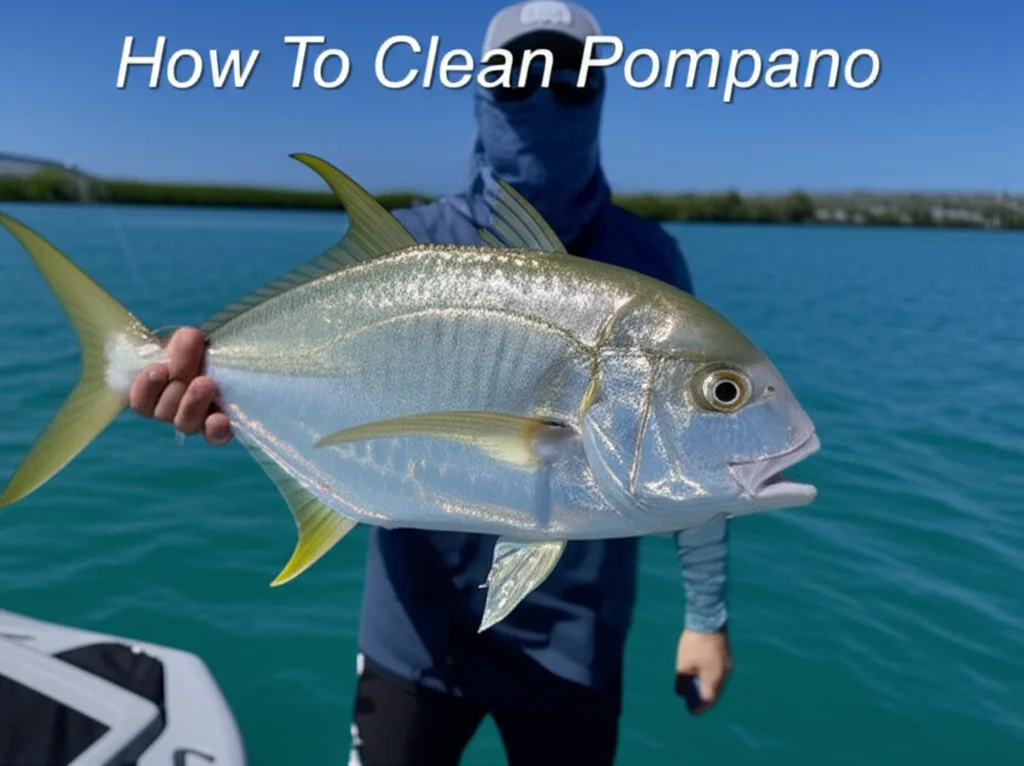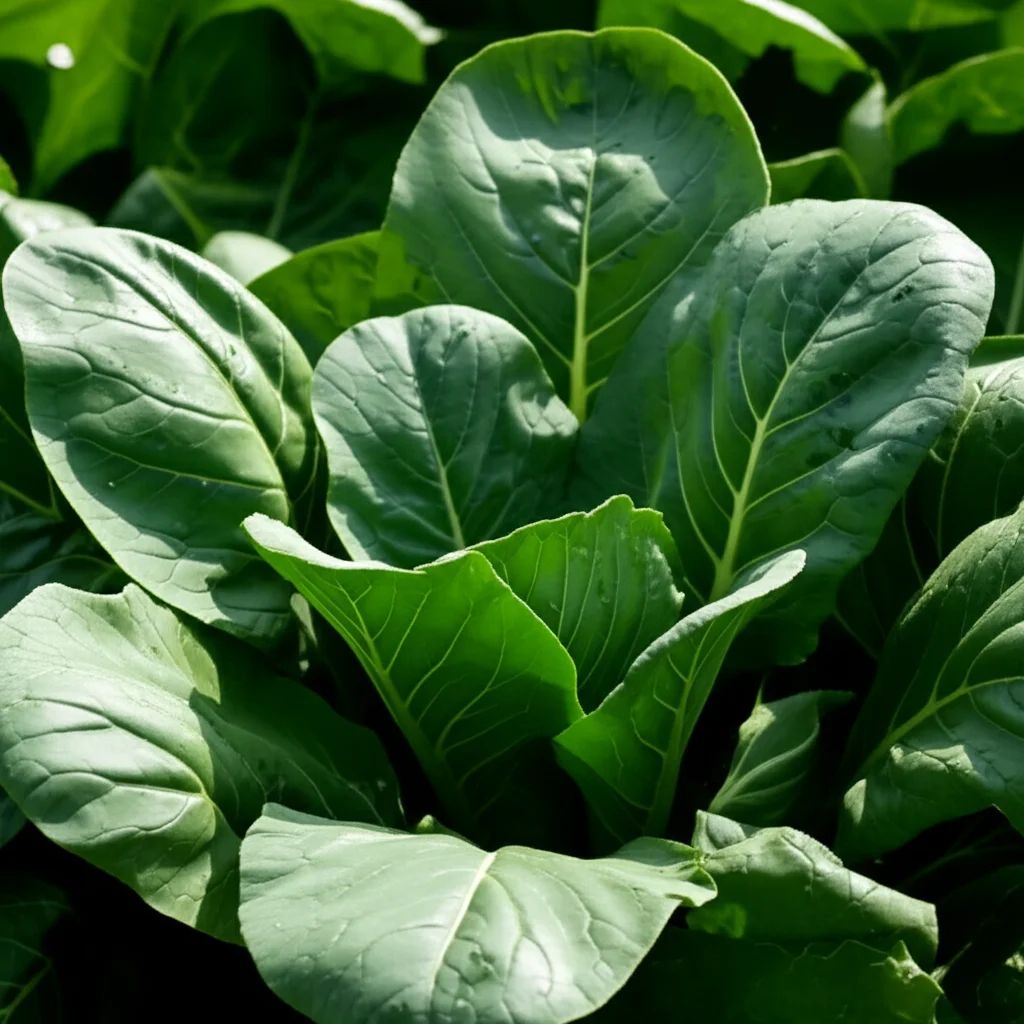· Todd Martin · Kitchen Essentials · 13 min read
How To Clean Pompano

Effortless Pompano Cleaning: A Step-by-Step Guide
Pompano fish offers a delightful taste, prized by seafood lovers everywhere. Its delicate flavor and firm, white flesh make it a favorite for many dishes. But before you enjoy this culinary gem, you must properly clean it. Knowing how to clean pompano correctly makes all the difference for taste and safety. This guide gives you clear steps to prepare your fresh pompano at home. I will walk you through essential tools, scaling, gutting, and final preparation. Let us get your pompano ready for a wonderful meal.
Takeaway
Properly cleaning pompano ensures the best flavor and texture.
- Gather all necessary tools before you start.
- Scale the fish by scraping against the grain.
- Remove the guts carefully to keep the flesh clean.
- Rinse the fish thoroughly, inside and out.
- Decide if you want whole fish or fillets for your recipe.
Pompano cleaning involves scaling, gutting, and rinsing the fish thoroughly. You remove scales by scraping them off, then make an incision to take out the internal organs. A final rinse ensures all impurities are gone, leaving you with clean fish ready for cooking.
Why Clean Pompano Properly for Peak Flavor?
Cleaning pompano fish with care is not just about hygiene; it is also about taste. Fresh pompano has a mild, sweet flavor, and its texture is firm yet tender. Improper cleaning can ruin this experience. Scales left on the skin can feel unpleasant when cooked. Guts left inside can make the fish taste bitter, and they spoil faster. We clean fish to remove these parts, which improves flavor, texture, and storage life.
A well-cleaned pompano also cooks more evenly. When you remove the insides, heat penetrates the fish consistently. This means no undercooked or overcooked spots. My family always praises how fresh our pompano tastes after I clean it this way. It makes all the effort worthwhile. Proper cleaning sets the stage for a truly great seafood meal. It shows respect for the ingredient and the people who will eat it.
Clean fish is also safer to eat. Removing guts helps prevent bacterial growth. Bacteria thrive in uncleaned fish. This can lead to foodborne illnesses. We always wash our hands and tools well after handling raw fish. This keeps our kitchen safe. Just as you would carefully prepare other seafood like how to clean crab or how to clean lobster, pompano needs similar attention for the best results.
Essential Tools for Cleaning Pompano at Home
Before you start cleaning pompano, gather all your tools. Having everything ready makes the process smoother and faster. You will need a few basic items from your kitchen. A good setup prevents interruptions and keeps your workspace tidy. I always lay out my tools first to stay organized.
First, you need a sturdy cutting board. A plastic one is often best because it is easy to clean and sanitize. Place a damp paper towel underneath the board to keep it from slipping. Next, a sharp knife is crucial. A filleting knife with a flexible blade works well for fish. If you do not have one, a sharp chef’s knife can also work. Safety is important; a sharp knife is safer than a dull one because it requires less force.
You also need a fish scaler. These tools have small, blunt teeth or ridges that easily remove scales without damaging the skin. If you do not own a dedicated scaler, the back of a knife or a spoon can serve as an alternative. A large bowl or a sink full of cold water is useful. This helps collect scales and rinse the fish. Lastly, consider wearing rubber gloves. Gloves keep your hands clean and improve your grip on the fish. They also protect you from any sharp fins or bones.
- Sturdy Cutting Board: Non-slip, easy-to-clean surface.
- Sharp Filleting Knife: Or a sharp chef’s knife for clean cuts.
- Fish Scaler: Or a spoon/back of a knife for scale removal.
- Large Bowl/Sink: For collecting scales and rinsing.
- Rubber Gloves: For hygiene and better grip.
- Paper Towels: For drying the fish and cleaning up.
The First Step: Preparing Your Pompano for Cleaning
Once you have your tools, it is time to prepare the pompano itself. Start by placing the fish on your cutting board. Inspect the fish for freshness. Fresh pompano has clear, bulging eyes, bright red gills, and shiny skin. It should smell like the ocean, not overly fishy. If the fish looks or smells off, it is best not to use it.
Give the fish a quick rinse under cold running water. This removes any loose dirt or debris from the outside. Pat it dry with paper towels afterward. A dry fish is easier to handle, especially when it comes to scaling. My grandmother taught me this trick; a slippery fish is a hazard waiting to happen.
Make sure your work area is clear and clean. You will be dealing with scales and fish parts, so prepare for some mess. Lay down old newspapers or paper towels around your cutting board if you want easy cleanup. This simple preparation step makes the entire cleaning process more efficient and less messy. It also helps maintain good hygiene in your kitchen.
How to Scale Pompano Like a Pro
Scaling pompano is the first main step in the cleaning process. Pompano has fine, delicate scales that are easy to remove. However, they can fly everywhere if you are not careful. I find it best to do this step in the sink or a large basin of water. This helps contain the scales. You can also do it outdoors with a hose.
Hold the pompano firmly by the tail. Use your fish scaler, or the back of a sturdy spoon, and scrape against the direction of the scales. Start from the tail and work your way towards the head. Use short, firm strokes. Apply consistent pressure to lift the scales. You will see them coming off easily. Make sure to get scales from all parts of the fish, including around the fins and belly. Run your fingers over the fish to check for any missed spots. The skin should feel smooth when all scales are gone.
Rinse the fish under cold water once you finish scaling. This washes away any remaining loose scales. You might need to rinse it several times to get it perfectly clean. My tip is to rinse both inside and outside. This step is crucial for a clean final product. If you are cleaning more fish, repeat this process for each one. Some people also prefer to use a pair of scissors to trim off the fins before gutting, though this is optional.
Efficiently Gutting Pompano Fish
After scaling and rinsing, the next step is gutting the pompano. This removes the internal organs and readies the fish for cooking. It is a simple process but requires a steady hand. Do this carefully to keep the fish meat clean. You do not want to puncture the intestines.
Place the scaled pompano on your clean cutting board. Take your sharp knife. Make a shallow cut along the belly of the fish, from just behind the gills all the way to the anal fin. Do not cut too deep; just deep enough to open the skin and muscle layer. You want to avoid puncturing the organs inside.
Open the belly cavity. Use your fingers or a spoon to scoop out all the internal organs. Reach in and pull everything out. You will see a dark bloodline along the backbone. This is the kidney. Scrape this away with your thumb or the tip of your spoon. This step is important because the bloodline can give the fish a stronger, less pleasant taste if left in. Rinse the cavity thoroughly under cold running water to remove any remaining blood or debris. Make sure the inside is completely clean. This thorough rinsing is similar to how one might clean other kitchen items, like understanding how to clean the bottom of a pan after cooking.
To Fillet or Not to Fillet: Options for Pompano
Once your pompano is scaled and gutted, you have a choice. You can cook the fish whole, or you can fillet it. Cooking pompano whole often results in a more moist and flavorful fish. The bones and skin add to the flavor during cooking. Whole fish also looks impressive on a serving platter. Many recipes call for whole pompano, especially for grilling or baking. If you choose to cook it whole, just ensure it is completely clean inside and out after gutting.
If you prefer boneless servings, filleting is the way to go. Filleting involves removing the flesh from the bones. This creates two boneless pieces of fish per pompano. It is great for pan-frying, broiling, or when serving children. To fillet, place the fish on its side. Make a cut behind the head, down to the backbone. Turn the knife parallel to the backbone. Carefully slice along the spine, moving towards the tail. The goal is to separate the fillet from the bone structure cleanly. Flip the fish over and repeat for the second side. You can also remove the skin from the fillets if desired. This is done by slicing between the skin and the flesh with a sharp knife.
Both options are good, it just depends on your recipe and preference. I often choose to cook pompano whole because I love the simplicity and the rich flavor it retains. If I am making fish tacos, then fillets are definitely the better choice. Just like preparing a how to clean skillet for its next use, deciding between whole or filleted pompano impacts your cooking method.
Final Rinse and Storage Tips for Fresh Pompano
After scaling and gutting, or filleting, give your pompano one last thorough rinse. Use very cold water for this. Rinse the fish inside and out, ensuring no scales, blood, or organ remnants remain. This final rinse is critical for hygiene and for achieving the best taste. I always run my fingers over the entire fish again, feeling for any missed spots. A clean fish is a happy fish, ready for cooking.
Once rinsed, pat the pompano dry with paper towels. Removing excess moisture is important. It helps prevent bacteria growth and ensures the fish cooks properly. If you are going to cook the fish immediately, you are all set. A dry surface also helps achieve a nice crispy skin if you plan to pan-fry or grill it.
If you are not cooking the pompano right away, proper storage is key to maintaining freshness. Place the clean, dry fish in an airtight container or a resealable bag. You can also wrap it tightly in plastic wrap. Then, put this container or bag on a bed of ice in a larger bowl or tray. Store it in the coldest part of your refrigerator. Pompano is best cooked the same day you clean it. However, it can stay fresh for 1-2 days when stored properly on ice. Do not freeze pompano unless you plan to keep it for longer periods. Freezing changes the texture of this delicate fish.
Cleaning Up Your Workstation After Pompano Prep
Cleaning up after processing fish is as important as the cleaning of the fish itself. Raw fish can leave odors and harbor bacteria. A good cleanup ensures your kitchen stays hygienic and fresh. My rule is to clean as I go, but a final deep clean is always necessary.
Start by disposing of all fish waste immediately. Put scales, guts, and any trimmings into a separate bag. Tie it securely and place it directly into your outdoor garbage bin. This prevents lingering odors in your kitchen. Next, clean all surfaces that came into contact with the raw fish. This includes your cutting board, knife, sink, and any countertops. Use hot, soapy water. Scrub everything thoroughly.
For extra sanitation, you can use a diluted bleach solution (one tablespoon of bleach per gallon of water) or a mixture of white vinegar and water. Spray the surfaces, let it sit for a few minutes, then rinse with clean water. This helps eliminate any remaining bacteria and smells. Pay attention to your hands too. Wash them with soap and hot water for at least 20 seconds. It is a good idea to consider how you how to clean stainless steel appliances or even how to clean grease filter in your kitchen. Keeping a clean and sanitized kitchen is key to healthy cooking and dining.
Frequently Asked Questions About Cleaning Pompano
What tools do I need to clean pompano fish?
You need a few basic tools to clean pompano. These include a sharp knife, ideally a filleting knife, and a fish scaler. A sturdy cutting board is also important. Many people use a large bowl or access to a sink for rinsing. Rubber gloves can also be helpful for grip and hygiene.
Can I clean pompano without a fish scaler?
Yes, you can clean pompano without a specific fish scaler. The back of a spoon or the dull side of a knife blade works well for removing scales. You scrape against the direction of the scales, from tail to head. The process might take a little longer, but it is effective.
How do I know if my pompano is fresh?
Fresh pompano has several clear signs. Look for clear, bright, and bulging eyes. The gills should be vibrant red. The skin should be shiny and moist, not dull or sticky. Most importantly, it should smell like clean ocean water, not overly fishy or ammonia-like.
Is it better to cook pompano whole or filleted?
The choice between cooking pompano whole or filleted depends on your recipe and preference. Cooking it whole helps retain more moisture and flavor from the bones and skin. Filleting provides boneless portions, which are convenient for some dishes like tacos or for children. Both methods yield delicious results when properly prepared.
How long can I store cleaned pompano in the refrigerator?
After cleaning, you should cook pompano as soon as possible for the best quality. If you must store it, place the clean, dry fish in an airtight container or bag on a bed of ice. Keep it in the coldest part of your refrigerator. It typically stays fresh for 1 to 2 days under these conditions.
Can I freeze pompano after cleaning?
You can freeze pompano, but it might slightly alter its delicate texture. To freeze, wrap the cleaned fish tightly in plastic wrap, then in foil, or place it in a freezer-safe bag. Remove as much air as possible. It can be stored in the freezer for up to 3 months. Thaw slowly in the refrigerator before cooking.
Conclusion
Learning how to clean pompano fish correctly is a skill that enhances your cooking and dining experience. From preparing your workspace to the final rinse, each step ensures you get the best out of this flavorful fish. You have learned how to scale effectively, gut the fish with precision, and choose between whole cooking or filleting. Remember, proper cleaning not only makes the pompano taste better but also ensures food safety.
By following these simple, clear instructions, you can confidently prepare fresh pompano in your own kitchen. This knowledge allows you to enjoy perfectly cleaned fish, ready for your favorite recipes. So grab your tools, get your pompano, and prepare for a truly delicious meal. Your efforts will pay off with every bite of perfectly cooked pompano. Enjoy the process and the fantastic flavors!





